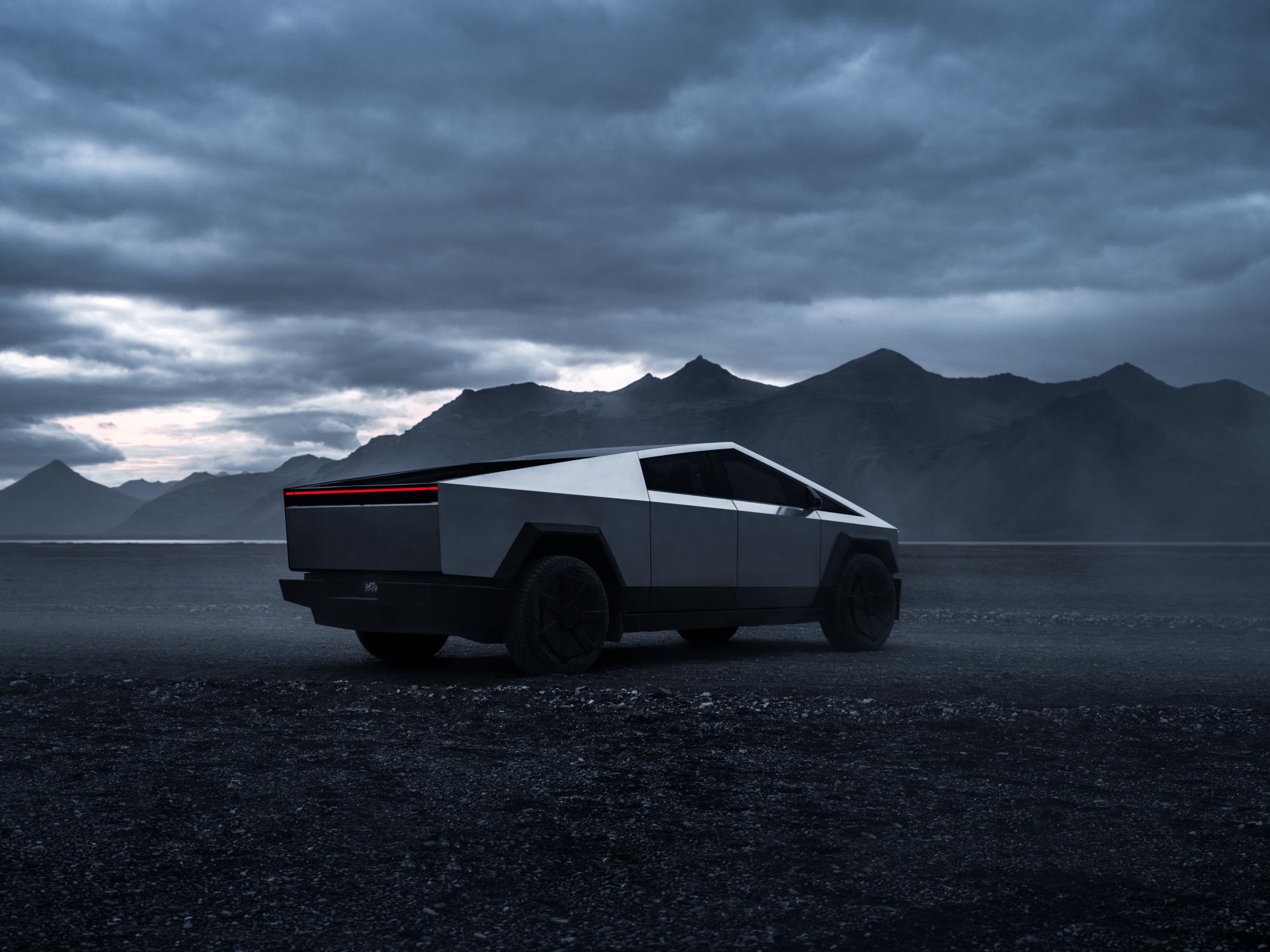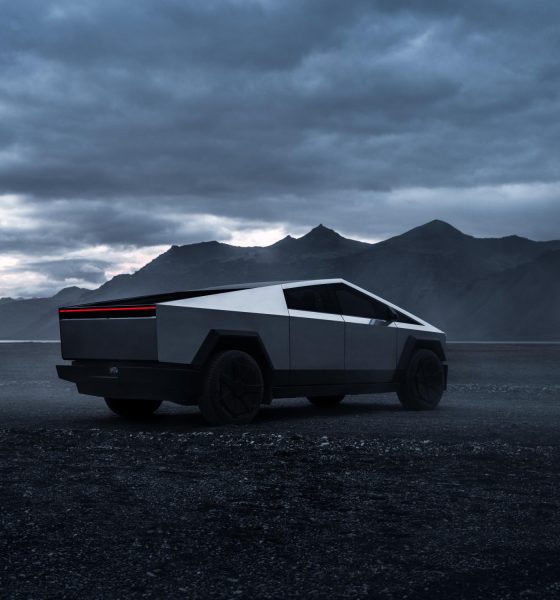Tesla performed its in-house crash testing of the Cybertruck, and because it was in compliance with Federal Motor Vehicle Safety Standards, the car can be delivered to customers. However, it does not have official safety ratings from the National Highway Transportation Safety Administration (NHTSA), and the Insurance Institute of Highway Safety (IIHS) has no plans to test the vehicle.
There’s an explanation for all of it, however.
The Cybertruck’s Situation with the NHTSA
The NHTSA does not “approve” new vehicles, but it establishes performance requirements that comply with FMVSS. Manufacturers certify compliance with these standards when they crash test internally. Some vehicles are crash-tested directly by the NHTSA, but the Cybertruck is not one of these vehicles. At least not yet.
According to a 2020 report from Consumer Reports, “97 percent of all new vehicles sold are crash-test rated by one or both of the independent organizations.”
However, as the Cybertruck’s preliminary safety ratings have been added to the NHTSA database, they do not include any specific ratings in terms of crash ratings. The only ratings are safety features, such as Front Collision Warning, Lane Departure Warning, Crash Imminent Braking, and Dynamic Brake Support, which all meet performance criteria.
The Cybertruck is not mentioned on the 2024 list of vehicles to be included in the agency’s five-star safety ratings tests.
This means the Cybertruck will not have official ratings from the NHTSA until the truck is tested by them directly, per the agency, which clarified its plans to Teslarati on Monday.
The Cybertruck’s Situation with the IIHS
The IIHS also has no plans to test the Cybertruck, the organization told us.
“Automakers do perform their own crash tests to ensure compliance with federal regulations and for internal purposes,” Joe Young of the IIHS said. “Regardless of whether the [Cybertruck] is ever tested by IIHS or for NHTSA’s NCAP program, it will still need to meet federal motor vehicle safety standards, which require certain crash test standards.”
The Cybertruck has done this, and the recommendation from the NHTSA and IIHS is more or less another nod of confidence for any vehicle that is tested. Tesla has received five-star ratings for its vehicles from the NHTSA in the past.
Young also said the Cybertruck could be tested by the IIHS in the future. However, that decision will be made after it can assess “the level of general consumer interest in the vehicle.” If it is popular enough, the IIHS may test it.
Tesla ‘highly confident’ Cybertruck is safer than other trucks: Elon Musk
Additionally, Tesla could reach out to the IIHS and nominate the Cybertruck for testing:
“The testing nomination process allows automakers to essentially reimburse us for the cost of the vehicle(s) to get it tested more quickly than we might otherwise do so. Either scenario would require vehicle availability, however,” Young said.
The IIHS also has a verification test program, which allows automakers to submit in-house data and results of crash testing. Due to limited funding and time, the IIHS cannot independently test every consumer vehicle on the market, so it can use OEM data to do so. The program is regularly audited to ensure accuracy.
However, the Cybertruck is not currently able to be a part of the verification test program. Young explained, “As a new model, the Cybertruck wouldn’t be eligible for this program in our driver-side small overlap test, and we don’t accept verification data for our updated moderate overlap frontal crash test program. It’s possible it could be eligible for a verification rating in one or more of our other tests, but that would be at the discretion of our crashworthiness team.”
I’d love to hear from you! If you have any comments, concerns, or questions, please email me at joey@teslarati.com. You can also reach me on Twitter @KlenderJoey, or if you have news tips, you can email us at tips@teslarati.com.

News
Nvidia CEO Jensen Huang explains difference between Tesla FSD and Alpamayo
“Tesla’s FSD stack is completely world-class,” the Nvidia CEO said.

NVIDIA CEO Jensen Huang has offered high praise for Tesla’s Full Self-Driving (FSD) system during a Q&A at CES 2026, calling it “world-class” and “state-of-the-art” in design, training, and performance.
More importantly, he also shared some insights about the key differences between FSD and Nvidia’s recently announced Alpamayo system.
Jensen Huang’s praise for Tesla FSD
Nvidia made headlines at CES following its announcement of Alpamayo, which uses artificial intelligence to accelerate the development of autonomous driving solutions. Due to its focus on AI, many started speculating that Alpamayo would be a direct rival to FSD. This was somewhat addressed by Elon Musk, who predicted that “they will find that it’s easy to get to 99% and then super hard to solve the long tail of the distribution.”
During his Q&A, Nvidia CEO Jensen Huang was asked about the difference between FSD and Alpamayo. His response was extensive:
“Tesla’s FSD stack is completely world-class. They’ve been working on it for quite some time. It’s world-class not only in the number of miles it’s accumulated, but in the way it’s designed, the way they do training, data collection, curation, synthetic data generation, and all of their simulation technologies.
“Of course, the latest generation is end-to-end Full Self-Driving—meaning it’s one large model trained end to end. And so… Elon’s AD system is, in every way, 100% state-of-the-art. I’m really quite impressed by the technology. I have it, and I drive it in our house, and it works incredibly well,” the Nvidia CEO said.
Nvidia’s platform approach vs Tesla’s integration
Huang also stated that Nvidia’s Alpamayo system was built around a fundamentally different philosophy from Tesla’s. Rather than developing self-driving cars itself, Nvidia supplies the full autonomous technology stack for other companies to use.
“Nvidia doesn’t build self-driving cars. We build the full stack so others can,” Huang said, explaining that Nvidia provides separate systems for training, simulation, and in-vehicle computing, all supported by shared software.
He added that customers can adopt as much or as little of the platform as they need, noting that Nvidia works across the industry, including with Tesla on training systems and companies like Waymo, XPeng, and Nuro on vehicle computing.
“So our system is really quite pervasive because we’re a technology platform provider. That’s the primary difference. There’s no question in our mind that, of the billion cars on the road today, in another 10 years’ time, hundreds of millions of them will have great autonomous capability. This is likely one of the largest, fastest-growing technology industries over the next decade.”
He also emphasized Nvidia’s open approach, saying the company open-sources its models and helps partners train their own systems. “We’re not a self-driving car company. We’re enabling the autonomous industry,” Huang said.
Elon Musk
Elon Musk confirms xAI’s purchase of five 380 MW natural gas turbines
The deal, which was confirmed by Musk on X, highlights xAI’s effort to aggressively scale its operations.

xAI, Elon Musk’s artificial intelligence startup, has purchased five additional 380 MW natural gas turbines from South Korea’s Doosan Enerbility to power its growing supercomputer clusters.
The deal, which was confirmed by Musk on X, highlights xAI’s effort to aggressively scale its operations.
xAI’s turbine deal details
News of xAI’s new turbines was shared on social media platform X, with user @SemiAnalysis_ stating that the turbines were produced by South Korea’s Doosan Enerbility. As noted in an Asian Business Daily report, Doosan Enerbility announced last October that it signed a contract to supply two 380 MW gas turbines for a major U.S. tech company. Doosan later noted in December that it secured an order for three more 380 MW gas turbines.
As per the X user, the gas turbines would power an additional 600,000+ GB200 NVL72 equivalent size cluster. This should make xAI’s facilities among the largest in the world. In a reply, Elon Musk confirmed that xAI did purchase the turbines. “True,” Musk wrote in a post on X.
xAI’s ambitions
Recent reports have indicated that xAI closed an upsized $20 billion Series E funding round, exceeding the initial $15 billion target to fuel rapid infrastructure scaling and AI product development. The funding, as per the AI startup, “will accelerate our world-leading infrastructure buildout, enable the rapid development and deployment of transformative AI products.”
The company also teased the rollout of its upcoming frontier AI model. “Looking ahead, Grok 5 is currently in training, and we are focused on launching innovative new consumer and enterprise products that harness the power of Grok, Colossus, and 𝕏 to transform how we live, work, and play,” xAI wrote in a post on its website.
Elon Musk
Elon Musk’s xAI closes upsized $20B Series E funding round
xAI announced the investment round in a post on its official website.

xAI has closed an upsized $20 billion Series E funding round, exceeding the initial $15 billion target to fuel rapid infrastructure scaling and AI product development.
xAI announced the investment round in a post on its official website.
A $20 billion Series E round
As noted by the artificial intelligence startup in its post, the Series E funding round attracted a diverse group of investors, including Valor Equity Partners, Stepstone Group, Fidelity Management & Research Company, Qatar Investment Authority, MGX, and Baron Capital Group, among others.
Strategic partners NVIDIA and Cisco Investments also continued support for building the world’s largest GPU clusters.
As xAI stated, “This financing will accelerate our world-leading infrastructure buildout, enable the rapid development and deployment of transformative AI products reaching billions of users, and fuel groundbreaking research advancing xAI’s core mission: Understanding the Universe.”
xAI’s core mission
Th Series E funding builds on xAI’s previous rounds, powering Grok advancements and massive compute expansions like the Memphis supercluster. The upsized demand reflects growing recognition of xAI’s potential in frontier AI.
xAI also highlighted several of its breakthroughs in 2025, from the buildout of Colossus I and II, which ended with over 1 million H100 GPU equivalents, and the rollout of the Grok 4 Series, Grok Voice, and Grok Imagine, among others. The company also confirmed that work is already underway to train the flagship large language model’s next iteration, Grok 5.
“Looking ahead, Grok 5 is currently in training, and we are focused on launching innovative new consumer and enterprise products that harness the power of Grok, Colossus, and 𝕏 to transform how we live, work, and play,” xAI wrote.










